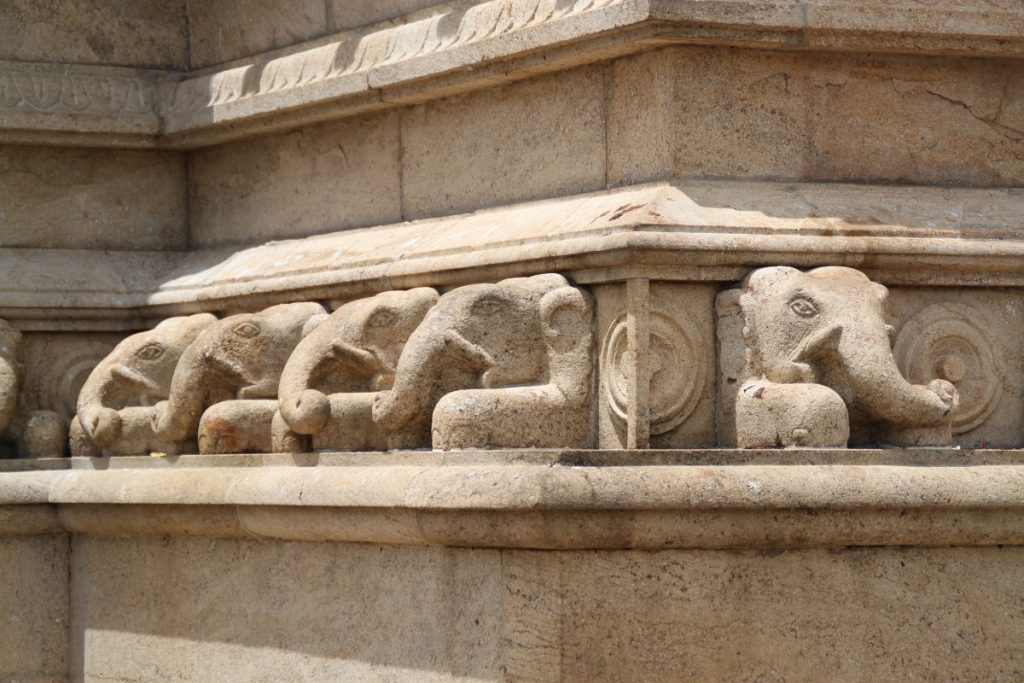I don’t know about you, but I am one of those people who like to look at their old travel photos to relive the good memories that might otherwise have been forgotten. Images I took at night around Singapore’s Marina Bay remind me of the sheer excitement I felt upon exploring this brightly illuminated part of the city on foot for the first time in 2010. While the photos from Bangkok’s Wat Phra Kaew taken in 2011 bring back that feeling of amazement thanks to the visually-arresting architecture, colors and sheen unlike anything I had ever seen before.
A recent dig into my hard drive brought back memories of a country that – despite its natural beauty, impressive cultural sights, and good food – is still something of an off-the-radar tourist destination: Sri Lanka. Relatively unknown to outsiders, to me the ancient city of Anuradhapura at the heart of the northern half of the island evokes particularly fond memories. On my first trip to the Indian Ocean nation in 2012 – also my first time in South Asia – I went all the way from Kandy to the country’s capital in antiquity on a hot, sunny day. The climate in this part of Sri Lanka is semi-arid, yet it was here where the Sinhalese culture began to develop more than two thousand years ago, as did a local form of Buddhism which has now become the predominant religion in the country.
Suresh, my trusted driver at that time, seemed to know all corners of Anuradhapura like the back of his hand. And it was him who advised me not to hire a guide. “They often make up stories,” he said, alluding to a problem that is sadly not unique to Sri Lanka as supposedly local tour guides in some parts of the world often tell tourists exaggerated accounts and unfounded claims just to wow them. He took me from one dagoba to another, through dirt paths under the scorching midday heat in his unairconditioned car. Also spelled dagaba, these gigantic Buddhist stupas that can reach a height of more than 100 meters were a sight to behold and the reason why, despite the oppressive heat, I wasn’t complaining at all. The fact that these thousands-year-old structures are not really known by the world in general made me ponder other monuments out there, in all four corners of the planet, that are not much mentioned in the news or anywhere else but are actually worth seeing.
If you’ve watched Star Wars, the name of these red brick stupas in northern Sri Lanka might sound familiar for Dagobah is that murky planet filled with swamps and forests where Yoda went into exile. However, real-life dagobas are located in a landscape that sees little rain, forcing any plants and trees that grow here to adapt to their harsh environment. This was also the reason why the ancient kings of the island also built water reservoirs so that the city could sustain a large number of people who would then help spread Buddhism and expand the kingdom’s power on the island. Interestingly, wildlife actually thrive here, a fact I only noticed on my second trip to Anuradhapura in 2015, this time with James as a part of our six-month-long journey.
On this visit, Anuradhapura was still very hot, but it looked greener than how I remembered it. This time with Mahesh, an Anuradhapura native who with his wife Achini ran a guest house in Kandy – where we stayed – I also explored places I didn’t get to see three years earlier, those that don’t usually make it to the list of locations people want to check out in Sri Lanka. Apart from getting to stop by sites most tourists skip, we were also able to spot different kinds of bird species thanks to the serene ambiance of these places. Most of them were hidden in plain sight, only recognizable through the sound they made. Some eventually did show themselves to us, although I wasn’t fast enough to take a photo of a beautiful kingfisher with its blue plume shining brightly in the sun. I did, however, manage to capture images of a black-hooded oriole (Oriolus xanthornus) flying from one tree to another. Also a black eagle (Ictinaetus malaiensis) perching on an ancient stone slab, perfectly camouflaged in its surroundings. On the other hand, the grey-headed swamphens (Porphyrio poliocephalus) with their distinctive red marking on their forehead and beak ambled along the shallow part of a pond, making their way through lotuses and other aquatic plants that covered the surface. They were all a reminder that in spite of its relatively compact size and population density, Sri Lanka is teeming with wildlife.
These memories of Anuradhapura were for quite some time supplanted by those created in more recent years from my travels to other parts of Asia. But since international travel is off the table for me right now (although I’m starting to see the light at the end of the tunnel as there is an increasing number of countries that have reopened their borders to those vaccinated with Sinovac – the vaccine that I got), I’ve been revisiting the photo folders in my hard drive and was delighted to realize that there were images from this ancient Sri Lankan city that had not yet seen the light of day. We travel to make memories, and for many people taking photos is our means of storing those memories in a safe place so that they can be recalled whenever we need them. And in a time like this, travel memories also give us hope of a future that can be when this pandemic is over.

A drip ledge, cut by ancient monks to create a dry shelter for them under the rock

A pond within the Ranmasu Uyana compound, a millennia-old royal garden


